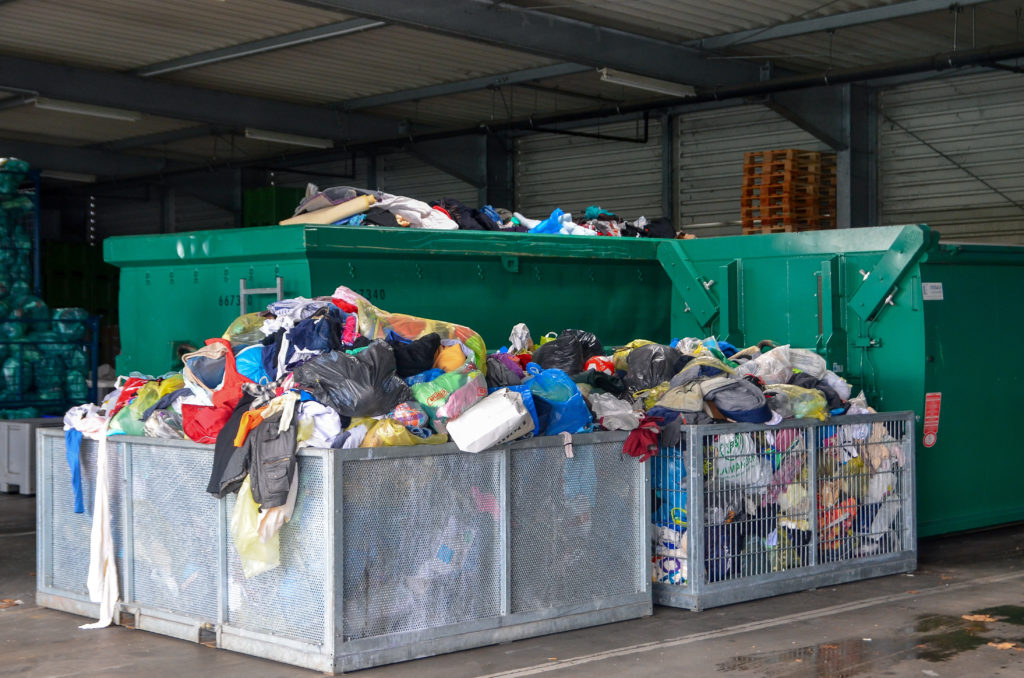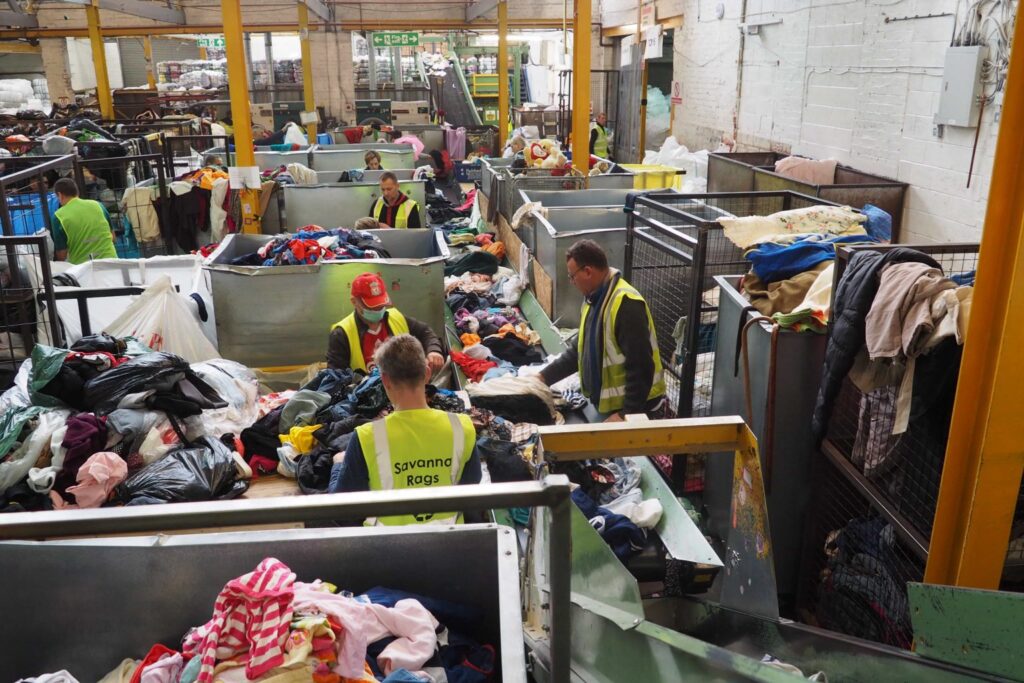Fibre-to-fibre recycling refers to the ‘closed-loop’ recycling of textiles, where the outcome of the recycling process would be spun with virgin fibre to manufacture new clothes with recycled content.
Reintroducing sorted and recycled textiles back into the value chain could generate an additional €74 million (£65 million) per year, Fashion for Good claims.
Fashion for Good is a global environmental initiative which works with the fashion industry. Its report, titled ‘Sorting for Circularity Europe’, analysed the composition of textile waste in Belgium, Germany, the Netherlands, Poland, Spain and the UK.
Using near infrared (NIR) technology, Fashion for Good examined 21 tonnes of post-consumer garments entering sorting facilities across autumn/winter 2021 and spring/summer 2022. The garments were sorted based on material composition, the presence of “disruptors” such as zips or buttons, and colour.
The analysis found that 21% of the analysed materials were suitable for mechanical recycling, with 53% suitable for chemical recycling.
However, only 2% of post-consumer textiles are currently diverted to fibre-to-fibre recycling, Fashion for Good says, with most downcycled into materials of lower value such as wiping cloths, carpet padding or insulation for other industries.
Katrin Ley, Fashion for Good’s managing director, said “a deeper understanding of the characteristics of today’s European post-consumer textiles landscape” was needed to make “informed” investment decisions.
Investment
Fashion for Good said sorting and textile recycling infrastructure required investment to scale up, as the amount of textile waste collected is expected to increase with the introduction of waste-related legislation.
The report argued that it was currently difficult to capitalise on fibre-to-fibre recycling as low feedstock prices make downcycling “more economically viable”. It argued that this might change with investment into recycling technologies and automated sorting, but a “sound business case is required to retain sorting capacity in Europe”.
Textile collection and sorting, traditionally carried out manually, is a “labour-intensive process”, the report said. It added this needed to be reflected in prices for feedstock for recycling.
However, the low value of the collected material could be “partly mitigated” by modulated fees paid under the planned extended producer responsibility (EPR) legislation, the report explained.
Legislation
Upcoming EU legislation will see member states required to ensure that systems are in place for the separate collection of discarded textiles by 2025.
Within the UK, fibre-to-fibre recycling is very embryonic
- James Beard, head of recycling services at Valpak
In the UK, textiles were identified as one of the priority areas to be consulted on in the context of EPR and product standards, but no public consultation document has been published yet.
“Within the UK, fibre-to-fibre recycling is very embryonic,” James Beard, head of recycling services at Valpak, told letsrecycle.com. “Investment is needed but before that, it’s the sortation that’s important.
“In the UK, all the sortation is based on reuse potential. For recycling to happen, textiles need to be sorted based on material composition and colour.
“That doesn’t happen on a wide scale at the minute, so the EPR system would have to fund that.
“All this infrastructure would need to be built in order for recyclers to have good quality feedstock and generate a product. It’s a bit of chicken and egg.”
Related link
Sorting for Circularity Europe report









Subscribe for free